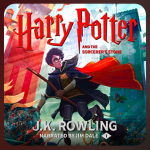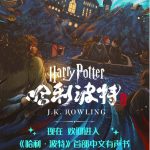Time-travelling back to 2005: New J.K. Rowling interview material (Part 3)
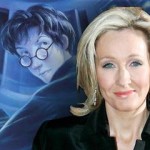
Jul 17, 2018
Books, Harry Potter and the Chamber of Secrets, Harry Potter and the Half Blood Prince, Interviews, J.K. Rowling, JKR Interviews, News
Thirteen years ago today, Lev Grossman released his interview with J.K. Rowling, discussing all manner of plot points and theories after the long-awaited release of Harry Potter and the Half Blood Prince. Thanks to guest writer Beatrice Groves, we’ve been bringing you exclusive new material from this interview, addressing J.K. Rowling’s response to readers, use of magic as metaphor and the fairytale genre. This final instalment covers Rowling’s hints at what was to come in Deathly Hallows, the importance of Harry Potter and the Chamber of Secrets, and Harry’s connection to Tom Riddle throughout the series:
Part 3: Horcrux hints: Chamber, ‘Half-Blood Prince’ and ring structure
Once the series was finished a number of critics noted that the series forms a ‘ring’ or ‘chiastic’ structure (in which the first novel is paired with the last, the second with the sixth and the third with the fifth, leaving the fourth novel as the ‘pivot’ around which the pattern turns). The links between the third and fifth novels, however, are the weakest pairing, so it would be a very rare reader who spotted the ring-structure prior to the publication of six – though some particularly sharp-eyed fans, aided and abetted by Rowling, were starting to notice something was up at this point. Rowling gave a startlingly clear signposting of the pairing between the second and sixth novels when she noted (in 2000) that Half-Blood Prince had been the working title for Chamber. She also underlined this connection in the 2005 Grossman interview:
“I’d say that of the whole series Chamber of Secrets is probably the least popular, but I take some pride in that book because I know there’s information in there that people had to have …Trouble is, no-one else knows it’s significant yet, so no-one else is appreciating my wonderful sleight of hand. Everyone’s thinking ‘Oh, that was a bit lacklustre’! [laughs] But I feel that in six, after they’ve read Half-Blood Prince, people who’ve been paying attention probably will realise that Chamber of Secrets had more in it than met the eye.”
The obvious ‘information’ Rowling is talking about here is Horcruxes. No-one knew that Riddle’s diary was a Horcrux until they read Half-Blood Prince, but I wonder if there is more important sotto voce hint about Horcruxes here.
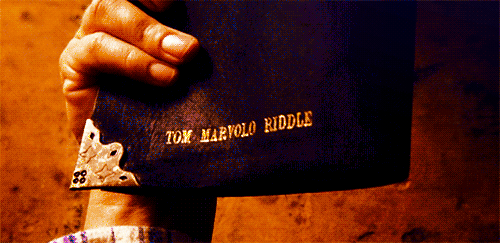
Something else that ties Chamber and Half-Blood Prince together is that these are the two novels in which explicit links are made between Harry and Voldemort. Harry’s journeys into the Pensieve in both Chamber and Half-Blood Prince reveal a number of similarities between Harry and Tom Riddle. These are the only two novels, for example, which mention the rumour that Harry might be a great dark wizard. They are also the only two novels in which the parallels between Harry and Voldemort are investigated. Chamber notes many of their ‘strange likenesses:’ they are similar looking, both half-bloods, both orphans raised unaware of their magical ancestry, and both Parselmouths. These parallels generate an unnerving Gothic frisson (Gothic being a genre which likes to have some uncanny echoes of the villain in the hero). The links haunt Harry with the fear that he might be the heir of Slytherin. These parallels deepen in Half-Blood Prince where Harry learns of their more fundamental kinship as two boys who grew up alone without the people who should have loved them and who find the replacement for that love in a place rather than a person. They find it in Hogwarts.

The kinship between Harry and Voldemort will be crucial. When Harry sees Riddle in Chamber say ‘no’ to his headmaster, he explicitly notes the likeness between them: ‘Harry was sure it was the same sort of “no” that he himself had given Dumbledore’ (Chamber, Chap 13). Moments later Dumbledore meets Riddle and taxes him with his behaviour ‘“What are you doing, wandering around this late, Tom?… Hurry off to bed,” said Dumbledore, giving Riddle exactly the kind of penetrating stare Harry knew so well’ (Chamber, Chap 13). Both Harry and Riddle lie to their Headmaster and both are the recipients of Dumbledore’s penetrating stare in part because both of them are rule-breakers. Harry’s ‘no’ fails to mention, for example, that he is making a Potion he shouldn’t be making with ingredients he shouldn’t have stolen in a toilet he shouldn’t be in. Tom’s ‘no’ is covering up the rather more serious secret of who is opening the Chamber of Secrets. But, crucially, this kinship in rule-breaking will mean that Harry (unlike Dumbledore) will find the place that Voldemort thinks he alone knows: ‘Of course, Dumbledore and Flitwick, those model pupils, had never set foot in that particular place, but he, Harry, had strayed off the beaten track in his time at school – here at last was a secret he and Voldemort know, that Dumbledore had never discovered –’ (Deathly Hallows, Chap 31).
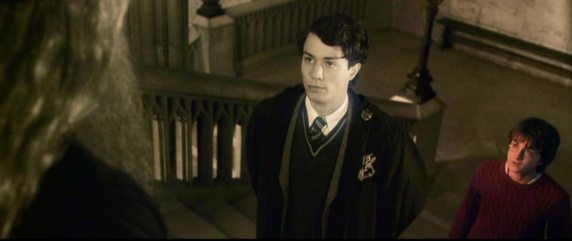
Harry’s kinship with Voldemort will enable Harry, in the final novel, to find the ‘final’ diadem Horcrux. Because of the ‘strange likenesses’ between them Harry understands, in a way even Dumbledore does not, that the final Horcrux will be hidden at Hogwarts. Because of the kinship between the two orphan boys the Grey Lady will tell her story to Harry, as she told it to Riddle. And, because of their shared rule-breaking natures, Harry, like Riddle, has discovered the Room of Requirement. Harry’s ability to discover the ‘final’ Horcrux rests precisely on those early links with Voldemort that he initially rejected.
Harry has strange links with Voldemort – looking back to Chamber we might also note that he has a strange link with one of his Horcruxes. Harry is strongly drawn to Riddle’s diary:
“Harry couldn’t explain, even to himself, why he didn’t just throw Riddle’s diary away… he kept absent-mindedly picking it up and turning the pages, as though it were a story he wanted to finish. And while Harry was sure he had never heard the name T.M. Riddle before, it still seemed to mean something to him, almost as though Riddle was a friend he’d had when he was very small, and half-forgotten.” (Chamber, Chap 13)
This kinship with the diary is shared by only one other person. While Ron keeps telling Harry to chuck it away, Ginny (like Harry) is desperately keen on the diary (remember that she ‘shrieked’ when she accidentally left it behind at the Burrow?) Ginny, we know, feels that the diary is her ‘friend’ (‘It’s like having a friend I can carry around in my pocket’) because she is being possessed by Voldemort’s soul. That Harry – just like Ginny – confuses the diary with a ‘friend’ (‘a friend he’d had when he was very small, and half-forgotten’) should give us pause. Is Harry also being ‘possessed’ by Voldemort’s soul, something that feels a wistful kinship with the diary?
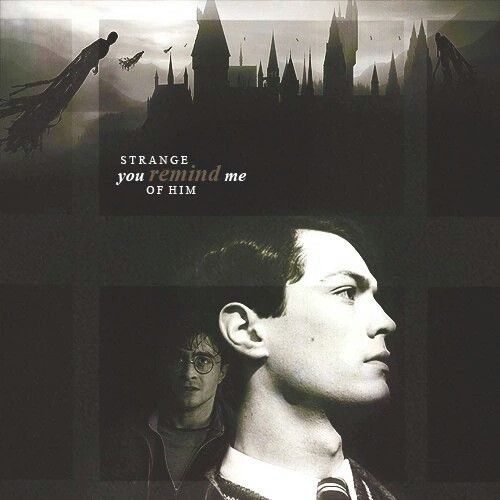
Something that is noticeable about the later references to the parallels between Harry and his nemesis is that they circle round Horcruxes. Harry, like Riddle, hangs back after a Potions class to try and winkle information about the same thing (Horcruxes), out of the same teacher (Slughorn). It is a parallel that is explicitly noted as Harry reminds himself ‘irresistibly of Voldemort’ (Half-Blood Prince, Chap 18) as he waits to question Slughorn about the Horcrux memory. Dumbledore drives home the Harry-Riddle-Horcruxes connection by noting that ‘at the same age as you are now, give or take a few months, Tom Riddle was doing all he could to find out how to make himself immortal’ (Half-Blood Prince, Chap 23). In a subtle underline of the point ‘[Riddle] took the seat to which Dumbledore had gestured – the very seat… that Harry had just vacated in the present’ (Half-Blood Prince, Chap 20). We don’t know it yet, but this means that Harry is sitting in the very chair in which Voldemort had sat when he returned to Hogwarts in order to hide the diadem Horcrux.
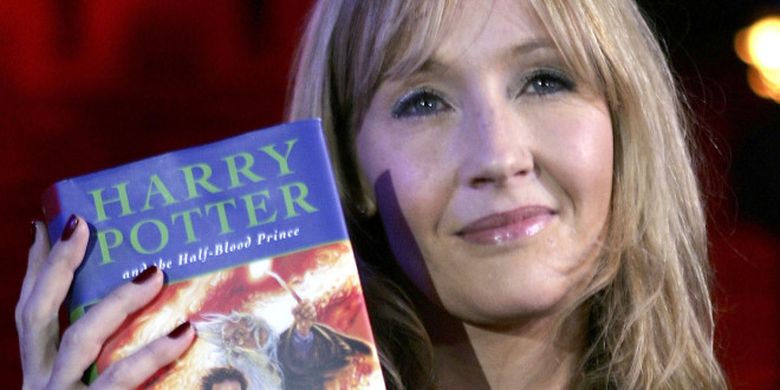
In the 2005 interview Rowling encouraged her readers to think carefully about the parallels between the second and sixth novels: ‘people who’ve been paying attention probably will realise that Chamber of Secrets had more in it than met the eye.’ A reader does not need to be paying attention to find out that Riddle’s Diary was a Horcrux: Dumbledore tells us this straight out at the end of Half-Blood Prince. But only the attentive reader will notice that Chamber and Prince are not only the novels about Horcruxes but also the novels in which the strange echoes between hero and villain are explored. Putting together these two connections – the Horcruxes and the Harry/Voldemort parallels – might enable the insight that the one parallel explains the other.
It seems at least possible that Rowling left in this interview the subtlest of clues to her central mystery; and lead the reader towards the possibility that Harry is like Voldemort because he is his Horcrux.
We hope you enjoyed reading some reflective analysis of J.K. Rowling’s comments from 2005! Though we may have been in the dark about Deathly Hallows at the point of this interview, it’s interesting to look back at Rowling’s references to plot points (like the Horcruxes) and make connections between the different books in the series! What are your thoughts on this new material? Do you have any questions about the Potter series you’re still dying to ask the author herself? Let us know in the comments!
Thanks to Lev Grossman for giving permission for the honor of having this new J.K. Rowling content added to Leaky’s extensive archives, and to Dr Beatrice Groves (who you can find on Twitter, here) for three wonderful write-ups of the new material! Beatrice previously guest-published an analysis of the History of Magic exhibition at The British Library, which you can find here, and be sure to check out more of her Harry Potter insights in her book, Literary Allusion In Harry Potter.
